Forever young
My first interest in my family story came in 2000 when I collected any old photos I could find, asked my mother about the context and the dates, wrote the years with a pencil on the back of the photos, put them in an old-fashioned album, showed them occasionally to a few people, but largely forgot about them.
My renewed interest in this topic came some 24 years later and resulted in this blog. By then I forgot some of the dates I wrote on the back and, I now realise, I didn’t look carefully before putting the photos in the album if there was anything written on the back. Now that I have done this, I had a few surprises, both with old messages and even the years I wrote.
I found out early on that my maternal grandmother, Aurelia, moved to Bucharest when she was 18, so this would be 1936. When I heard that she moved back to the countryside because of WW2, I assumed this happened in September 1939, at the start of the war, but now I realise this might be wrong as I assumed this happened on the date now given as the start of WW2 in the history books. If present events tell us anything, it’s how messy and uncertain things are as they happen, though let’s hope this is not a repeat of those years! My mother dated some of Aurelia’s photos as a young professional woman working in Bucharest to be from 1941 and 1942, and there is a photo of hers from a studio in Bucharest from early 1943.
The only dates I know for certain is that Aurelia, with her mother’s big financial effort, bought a piece of land in Bucharest in April 1939, clearly intent on building a house on it and making her life in the capital. And then I know that by the time she got married in 1944 in Pitesti, her county, Arges, capital, she had moved back to the village. Between these two dates, the difficulties of establishing a precise timeline of where she was when defeat this amateur historian. But like with a CV when doing it chronologically is not favourable or possible, you do a skills based CV, I will go with a non-chronological approach when I am not sure about dates.
In the first part of the story I covered the early, roughly first 18 years of Aurelia's life. I will use the surviving photos of her to show significant moments of her life. Occasionally, I tried colorising the photos.
Continuing with her story, after graduating and qualifying as a teacher, Aurelia chose to move to Bucharest and live with her aunt, Flora (whose story I wrote here). Flora had made this move a generation earlier and was a midwife in Bucharest at the time. I learned that they were sharing a flat in the center of Bucharest, opposite my old high school, Lazar and that they were very close. I know that Aurelia’s mother visited her in Bucharest at least a few times and that Aurelia went back on holidays to the village of her birth as various photos prove.
I have a photo of Aurelia that my mother knew as being for Aurelia’s employment record, like what you might put today in a CV or on LinkedIn.
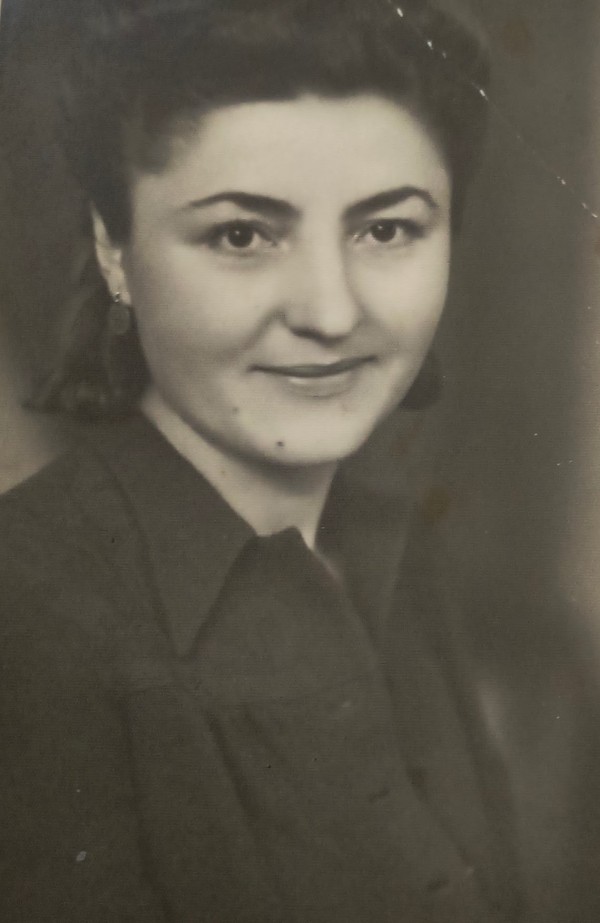
The main information I have on what she did in Bucharest is that she was secretary to someone called
Armand Cǎlinescu. According to his wikipedia page, he was a Romanian economist and politician, who served as 39th Prime Minister from March 1939 until his assassination six months later. He was a staunch opponent of the fascist Iron Guard and may have been the real power behind the throne during the dictatorship of King Carol II. He survived several assassination attempts but was finally killed by members of the Iron Guard with German assistance.
How credible is the information on her employment in the absence of any paperwork? The source is mainly Aurelia’s mother, Constance(though other relatives mentioned it) and, to my mind, it is credible. My mother told me that her grandmother rarely talked about Aurelia and only when she was older. Indeed, in the letters I have, about 30 of them, written when my mother was 14 and 15, she does not mention Aurelia once, instead Constance frequently sends warm greetings to “the parents” (meaning my mother’s dad and step mother) and advises her granddaughter to listen to her mum and dad, again meaning the step-mum. I think Constance kept her, no doubt, never-ending grief apart from her granddaughter given the circumstances of Aurelia’s death in childbirth. Given this restraint, I believe that when Constance gave some information on her daughter it was true and not an exaggeration of grief.
Then there might be a few things which we could call circumstantial evidence. According to his wikipedia page again, Calinescu was born in Pitesti, the Arges county capital where Aurelia and her mum lived and the town where Aurelia went to school. He was the son of a landowner and relatively wealthy man. He started his political career in the county and was, at various times, the MP and the local prefect. I think this would be consistent with Constance saying that her and Calinescu’s families knew each other socially, given geographical and social status similarities. I mentioned in the previous post how Aurelia was courted by a young man that was a pretor, the position under county prefect. Again, there could be another link to the upper tiers of the local government from which a recommendation or introduction might have come.
And finally, I think the photographs I have of her in Bucharest indicate a lifestyle that would be compatible with this position. I mentioned previously that other than the studio photos, Aurelia’s photos were a bit random depending on someone else having a camera around. I also mentioned the street photographers that made a living out of taking photos of well dressed people (as a proxy for economic status that would indicate they could pay for the photos).
These are the street photos I have of Aurelia that my mother thought were from 1941-1942. The dates are difficult to establish but, the places, on the other hand, are clearly in Bucharest city center: one of the buildings is very recognisable( Romarta Copiilor), and the other are central streets (e.g. Calea Victoriei). The photos are from different seasons, she wears two different coats in them, though she could have more than one per season. Maybe she looks a bit older, but it is hard to tell. Anyway, I love the street scenes and her looks as a professional woman.
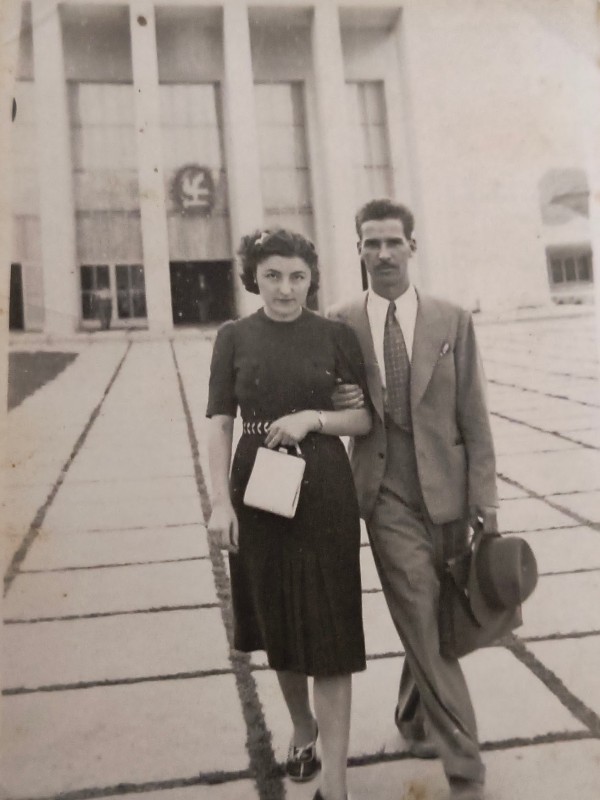
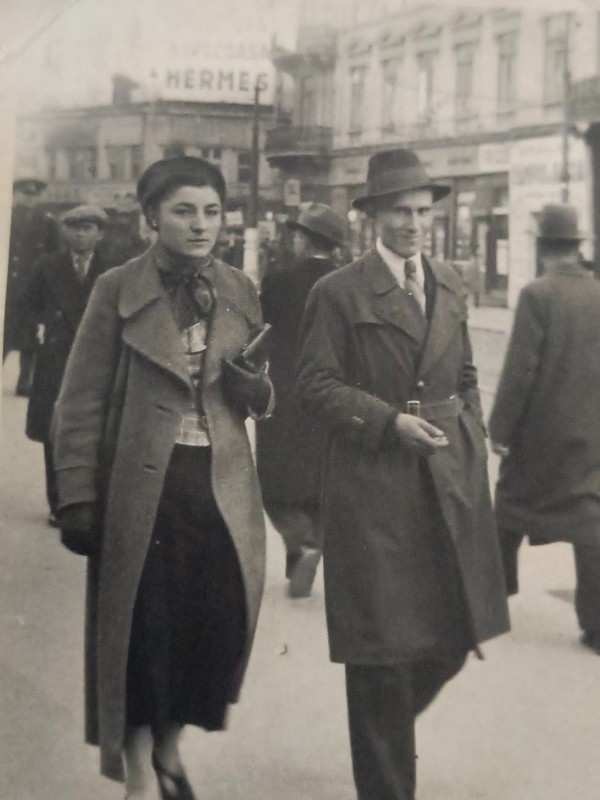
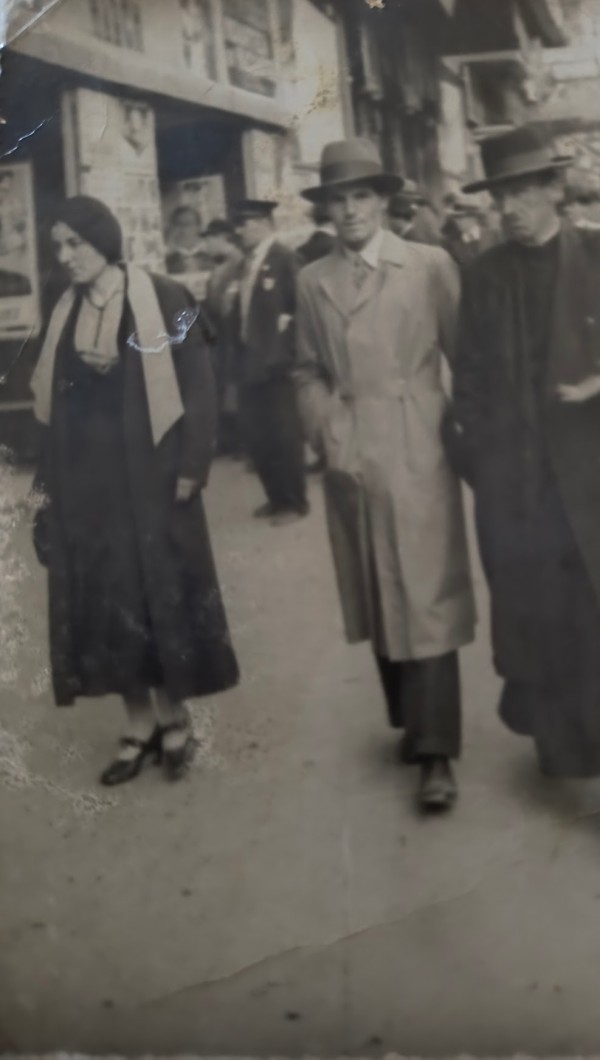
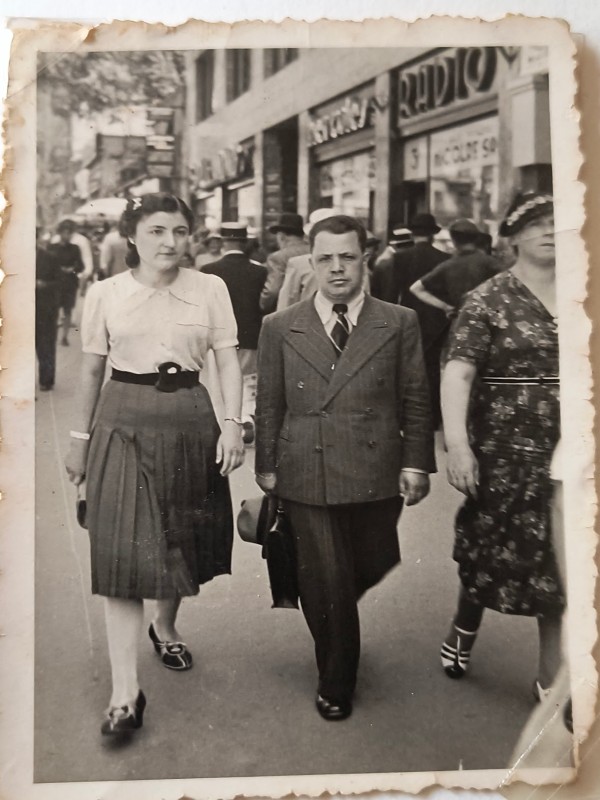
A recent film shows that Winston Churchill had an army of secretaries. It might not have been the same for the Romanian PM at the time( he only wrote one book, for a start, and did not have an empire to run), but equally, Cǎlinescu probably had more than one secretary.
I knew that the letters between Aurelia and her mother are lost, so it was a big surprise to find a little note on the back of the last photo from Aurelia that says: After heated discussions in the office, I and my colleague Simionescu were walking to get some food.
I found the little note quite touching: the casualness of it referring to a lunch from nearly 80 years ago, and the fact that I could see her handwriting for the first time. I wondered what heated discussions were going on in the office she was in. In my office, this would be a difficult task with impossible deadlines. For others, this could be arguments over the coffee rota or who left the dirty cup by the sink. Maybe, just maybe, these heated discussions that Aurelia mentioned were about something far more important. I will never know.
It also hit me a similarity I didn’t think of before: years later I did something similar : building a career away from the place of birth, sending letters and photos of myself to my mother, writing on the back to explain what was happening, having my mother visit me at my place and going home for holidays. Of course, I have been far more fortunate than her. These are only four photos, but if these are in any way representative, she might have worked in a male dominated field too. There are no fellow secretaries in these photos, but it does not mean that there were none.
Hopefully, there was some fun too for her. I have this photo of her relaxing on the park bench with her aunt in the central park of Bucharest,
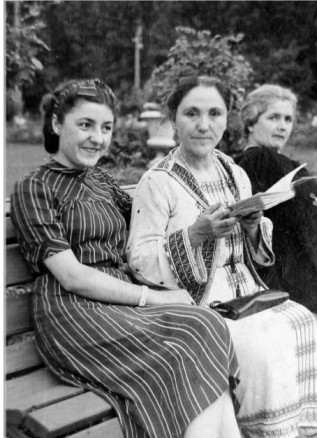
I have this photo of her from what I am told was a ball, again, to my mind, compatible with her moving in certain social circles.
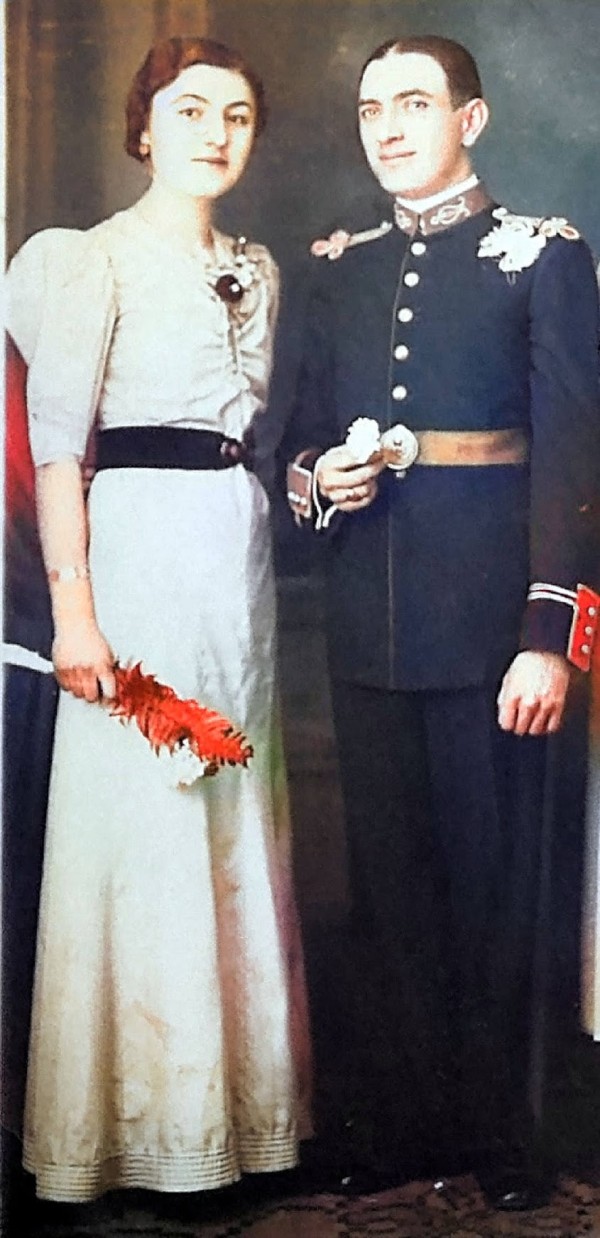
And from this rather unusual studio photo from that era, I think it’s fair to say that she loved the camera and the camera loved her back, professional and playful in one.

While retroactively, the 1920s and 1930s were seen as a bit of a golden age for Romania and Bucharest, especially economically and culturally after the century old dream of national unity has been fulfilled at the end of WW1, the latter years of the 30s, when Aurelia was definitely in Bucharest, were no picnic politically, with lots of instability, political violence, the rise of extreme right movement called legionaries that went on to assassinate not just the prime minister but a few other personalities, the royal dictatorship and extremely frequent changes in government She clearly needed some resilience to work and live there. I read that Bucharest had seen the first major bombardment in 1943, so maybe that, rather than the invasion of Poland in 1939, was the deciding factor for Aurelia's move out of the capital.
Anyway, at some moment likely to be early 1940s, Aurelia decided with her mother that the situation in Bucharest had become too dangerous so she moved back to the village of her birth, hoping to live off the end of the war in the relative safety of countryside before continuing her life in Bucharest.
I know she did some teaching, going back to her qualification as well as being involved with various social and charitable work, some of it with the guidance of her uncle, the priest (his story here), some with Girl Guides.
In this photo, taken on one such occasion she went back to wearing a folk costume, in the center of the photo. She was supporting peasant mothers with various health, education and social information.
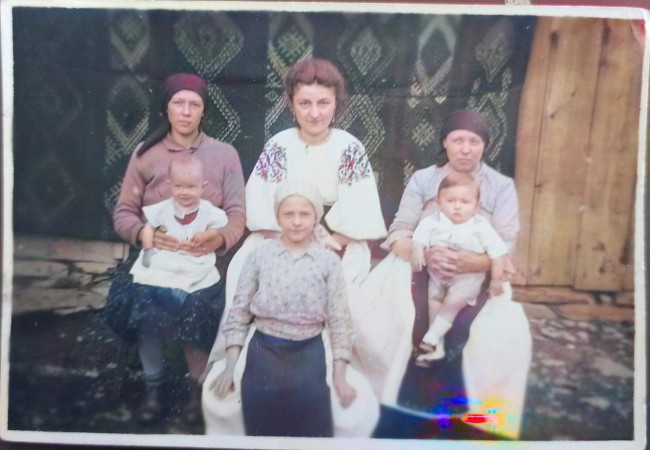
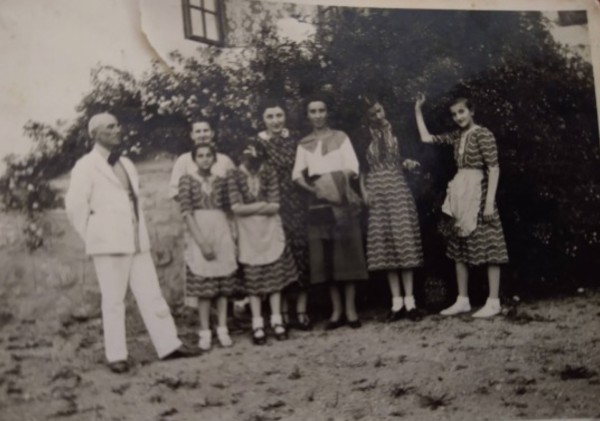
She was travelling frequently to the county capital, Pitesti, both to visit relatives, including the cousin that I mentioned in the first part,
and to take part in various social events like these photos, rather damaged and not of great quality, show.
Aurelia is on the right in the first photo and on the left in the second.

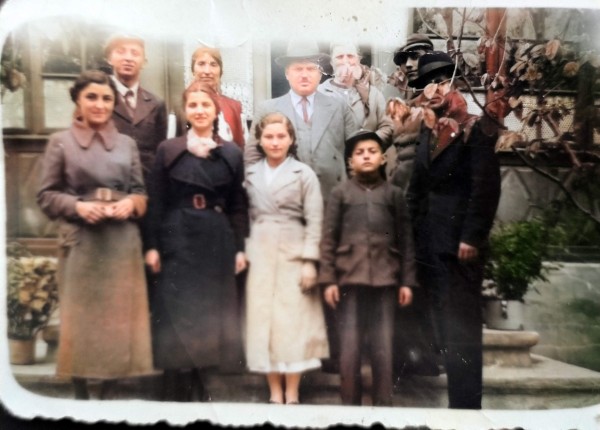
Indeed, it was during a social event in Pitesti that she met my grandfather Costicǎ, whose early life I described here). He was at the time in Pitesti as the head of the professional organisation of agronomy and agriculture. This organisation,“Casa Agronomilor”, hosted a ball that Aurelia went to. My grandfather told my mother the story of how they met.
It turns out that the balls back then had a custom of picking a “queen of the ball” or “prom queen”. This is annoying enough in American high school movies but for adults, honestly! Anyway, the way Costicǎ, the least romantic person in the world, and 12 years her senior, told it: “Aurelia was chosen as the queen of the ball. She had an elegant dress from the Galeries Lafayette shop in Bucharest and was dazzling; all eyes were on her, they had not seen anyone as beautiful as her”. My mother and I concluded that he was talking mainly about himself. I have no other details of their courtship, wedding or life together, only that they married in 1944. He was clearly smitten, but did she choose wisely? To be honest, I don’t think so, but then, maybe, it’s unfair to overlap my image of him from 40 years later, grumpy old man over that event. They had little time together, I hope he treated her like the queen she was when he met her.

The last photo I have of Aurelia is while pregnant with my mother from the summer of 1945, the very picture of a glowing pregnant woman.
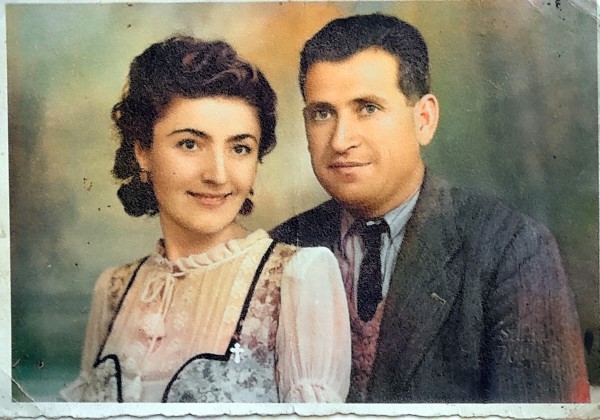
In the story of Aurelia's aunt, Flora, flatmate in Bucharest, friend, surrogate mother and role model, I described all the unknowns related to why Aurelia gave birth at home and what went wrong, but these do not change the basic fact.
It clearly was a huge loss, most of all, for my mother, but also for all the adults at that time: Aurelia’s mother, husband, aunt, other relatives like the cousin that could not forget her and, also, for future generations too and I include myself in this category. There is no getting away from it, this was a big tragedy for my family.
I am in awe of how much she packed in the years she had and I am grateful that these fragile photos survived long enough to be able to reconstitute some parts of her life.
So proud of you, forever young, Aurelia!